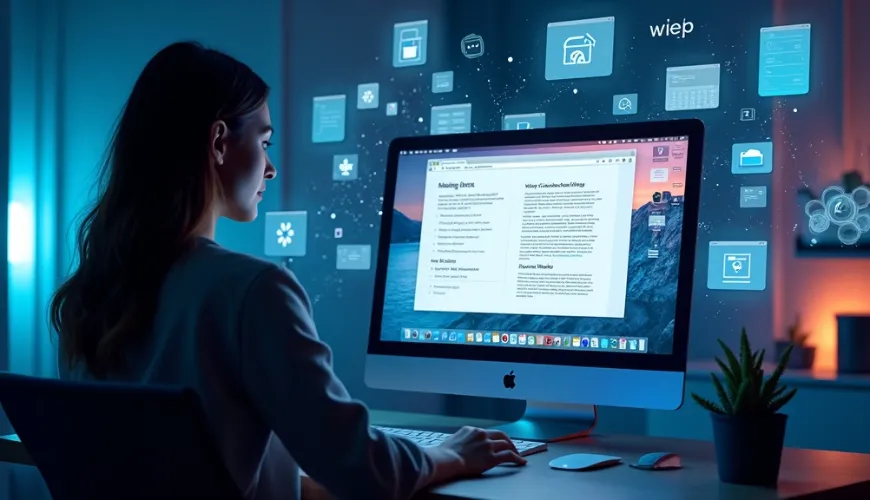What Is AI Video Upscaling and Why Everyone's Talking About It in 2025
AI video upscaling has emerged as one of the most impactful technologies in digital media, reshaping how we consume and create video content in 2025. Whether you're a video creator, a brand marketer, or just someone who loves old movies, this technology offers a way to breathe new life into low-resolution videos—making them sharper, more detailed, and more visually appealing than ever before.
Simply put, AI video upscaling uses artificial intelligence to enhance the quality of videos by increasing their resolution. Unlike traditional methods that often just stretch the pixels, AI analyzes patterns, fills in details, and generates new pixels that look natural and sharp. It's like unlocking hidden detail in your videos—AI can enhance them toward 4K or even 8K quality, though results depend on source quality and may sometimes introduce artifacts, as seen in some controversial upscaling cases.
How AI Video Upscaling Works Behind the Scenes
At the core of AI video upscaling are deep learning models—usually convolutional neural networks (CNNs)—trained on vast amounts of high-resolution and low-resolution video data. These models learn how real-world textures, edges, and movements should appear and then apply that knowledge to enhance new video content.
When you input a low-res video, the model doesn't just guess what's missing; it intelligently predicts the most realistic version of what those extra pixels should look like. The algorithms can sharpen edges, restore lost textures, and even reduce noise, motion blur, or compression artifacts. This is a major step up from traditional upscaling methods that rely on basic interpolation techniques like bicubic or bilinear scaling, which often result in blurry or blocky images.
Why AI Video Upscaling Matters More Than Ever in 2025
In today's digital-first world, video content is everywhere—from TikTok shorts and YouTube tutorials to product demos and VR experiences. As screen resolutions keep getting sharper and internet speeds grow faster, viewers expect nothing less than crystal-clear visuals. That's where AI video upscaling becomes a game-changer.
For content creators, it saves time and resources. Instead of reshooting footage in higher quality, they can upscale older videos and match current quality standards. Businesses benefit by repurposing existing video libraries for modern platforms without needing expensive re-edits. Casual users, too, gain the ability to upscale family videos, classic films, or game footage, making them suitable for today's UHD displays.
Platforms like Claila—which offers cutting-edge AI tools—can easily integrate AI models like ChatGPT, Claude, or image generators to support related tasks such as scripting, thumbnail creation, and video summarization, complementing video upscaling efforts.
Practical Use Cases in the Real World
AI video upscaling isn't just for professionals. Its applications stretch far beyond studio environments and into everyday use cases.
A small business creating product showcases on a budget can shoot with basic gear and upscale the footage to match professional standards. YouTube creators restoring retro gaming content can enhance pixelated graphics to look stunning on modern displays. Even educators digitizing old VHS training tapes can now make them viewable in high-quality formats for remote learning platforms.
Another fascinating use is in AI-generated art and content. Platforms that offer tools like AI animal generator or AI fantasy art can benefit from video upscaling tech to transform animated clips or collages into high-definition visuals. The crossover between different AI tools opens up creative possibilities that were simply not feasible before.
Benefits That Go Beyond Resolution
The advantages of using AI video upscaling span much further than just clearer images. A major advantage is preserving historical or rare footage: for instance, AI has been used to colorize and upscale century-old films like "A Trip Down Market Street" to 4K with frame interpolation, bringing them to life for modern audiences.
Another benefit is bandwidth efficiency. Streaming services can store lower-resolution copies and upscale them in real-time, reducing server loads while still delivering HD content. This is especially important for mobile users or regions with limited internet access.
AI upscaling also enhances accessibility. People with visual impairments benefit from clearer visuals and reduced image noise, helping them engage more comfortably with content. And for gamers, upscaling technologies can make older titles feel like remastered editions, improving immersion without needing full redevelopment.
Where Traditional Upscaling Falls Short
Before AI entered the picture, video upscaling was mostly a mathematical operation. Techniques like nearest-neighbor or bicubic interpolation increased video resolution by estimating pixel values, but they didn't add any real detail. The result? Videos looked larger, but not better.
These methods often led to jagged edges, softened textures, and a plastic-like appearance. Motion sequences also suffered due to lack of frame consistency, often causing ghosting or artifacts. AI video upscaling, by contrast, understands context. It differentiates between a person's face and a tree in the background, enhancing each appropriately. That's something traditional upscaling simply can't do.
Choosing the Right AI Video Upscaling Tool in 2025
With so many tools now available, picking the right AI video upscaling software depends on your needs. Some platforms are cloud-based and require no installation, while others are desktop programs offering deeper customization. A few key things to consider include processing speed, supported formats, customization options, and whether the tool uses the latest AI models.
Look for platforms that support popular AI frameworks and are regularly updated to stay compatible with new hardware like GPUs and AI accelerators. Integration with other creative tools—like Claila's AI language and image tools—can also streamline your workflow.
It's also smart to check community feedback. Tools that are well-reviewed on forums like Reddit or praised in tech publications such as TechRadar tend to be more reliable. Keep an eye out for tools that support creative extensions, like the ComfyUI Manager, which allows better control over your AI-generated visuals before and after upscaling.
Step-by-Step Guide: Using an AI Video Upscaling Tool
Let's walk through a common scenario—upscaling a 720p video to 4K. First, you'll upload your video to an AI upscaling platform of your choice. Many of these tools offer drag-and-drop simplicity, so you won't need to fiddle with complex settings unless you want to.
Next, choose your target resolution and any enhancement options, such as motion smoothing or noise reduction. Some tools offer preview windows so you can compare the original with the upscaled version in real-time.
Once you hit "process,” the AI begins analyzing each frame. This step can take a few minutes to several hours depending on video length and hardware performance. When it's done, simply download your enhanced video. The result is a crisp, clean version of your original file, ready to share or archive.
It's really that easy, and the best part is, you didn't need expensive gear or a film crew to make it happen.
Where AI Video Upscaling Is Going Next
As we continue into 2025 and beyond, AI video upscaling is poised to get even more advanced. One exciting development is real-time AI video upscaling, such as NVIDIA's RTX Video Super Resolution, which already enables viewing low-res content in HD or 4K on supported RTX GPUs—a major benefit for streaming, gaming, and video playback.
Additionally, real-time upscaling technologies in gaming—such as NVIDIA's DLSS and AMD's FSR—demonstrate how AI can enhance visuals and performance by rendering games at lower resolutions and reconstructing higher-res output with minimal quality loss.
Another trend is the merging of AI upscaling with other generative models. Imagine combining upscaling with scene reconstruction, where missing parts of a frame are rebuilt from scratch using AI. This has the potential to revolutionize everything from movie remastering to surveillance footage analysis.
We're also seeing tools that blend video enhancement with creative maps using technologies similar to AI map generators. Projects like AI map generator show how AI can crossover between artistic creation and technical enhancement, unlocking new storytelling opportunities.
Additionally, as user interfaces improve, even non-tech-savvy users will be able to access these powerful tools. Predictive models might soon suggest the best upscaling settings based on the video's content—saving more time and delivering better results automatically.
Limitations You Should Know
Despite all the benefits, it's important to understand that AI video upscaling isn't magic. It works best when there's enough visual data to analyze. Extremely pixelated or poorly lit videos may still upscale poorly, as the AI has less to work with.
Some tools can introduce artifacts or unnatural textures if overused or misconfigured. And while processing speeds are faster than ever, upscaling high-resolution footage still requires significant computing power, particularly for real-time applications.
There's also the ethical side. As AI gets better at generating hyper-realistic visuals, distinguishing between authentic footage and altered versions becomes more challenging. This raises concerns in journalism, security, and content authenticity, making it crucial for future tools to maintain transparency features like metadata tagging or watermarking.
The Intersection of AI and Creative Magic
In a world where visual storytelling reigns supreme, AI video upscaling has become more than just a tech buzzword—it's a creative catalyst. Whether you're reviving old family videos, enhancing your social media content, or building immersive worlds using tools like the AI fortune teller, the ability to make your footage shine has never been more accessible.
As AI continues to evolve, so too will the ways we edit, share, and experience video. And with platforms like Claila offering a wide range of productivity and creative tools, the future of content creation is looking sharper than ever—literally.



